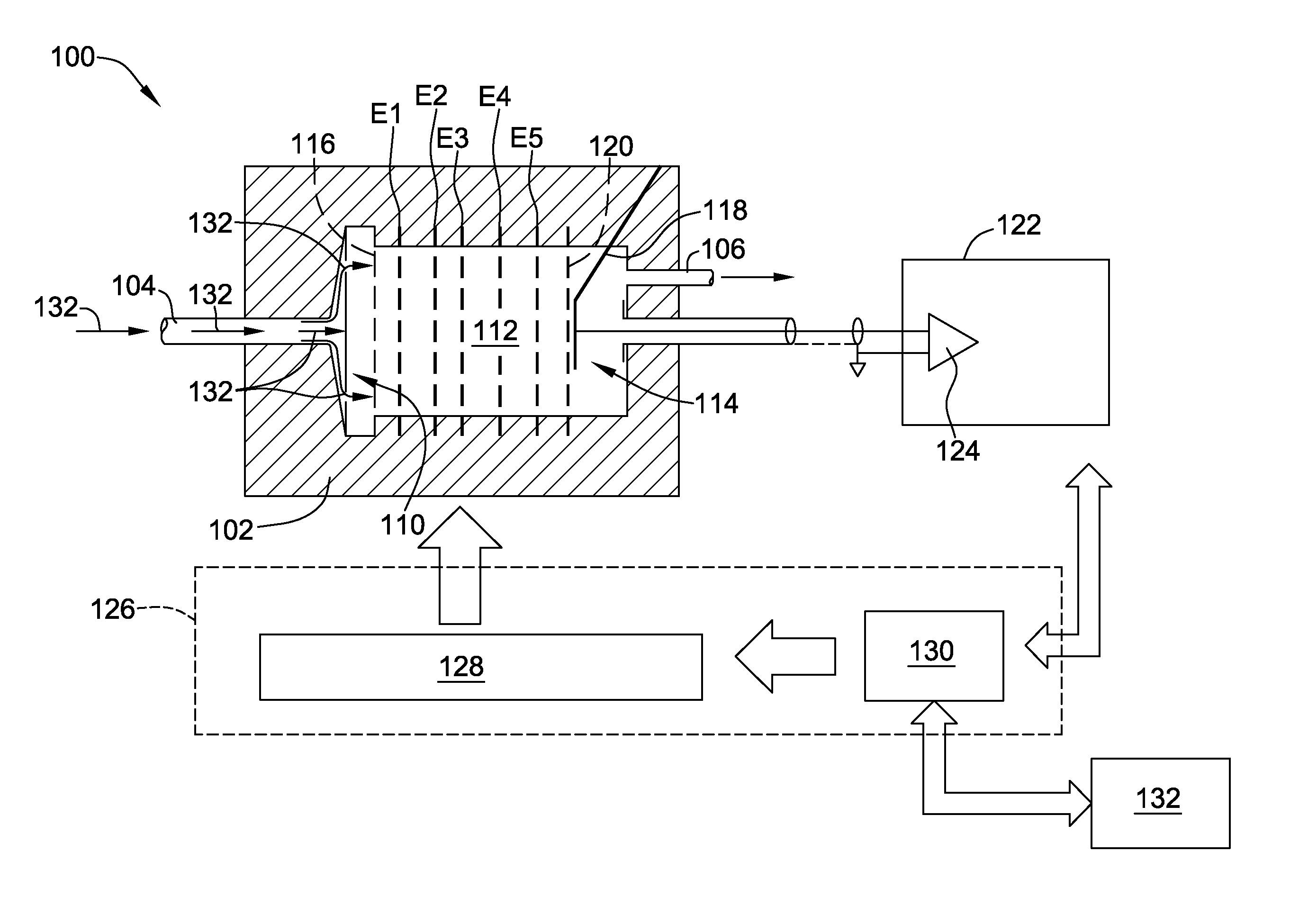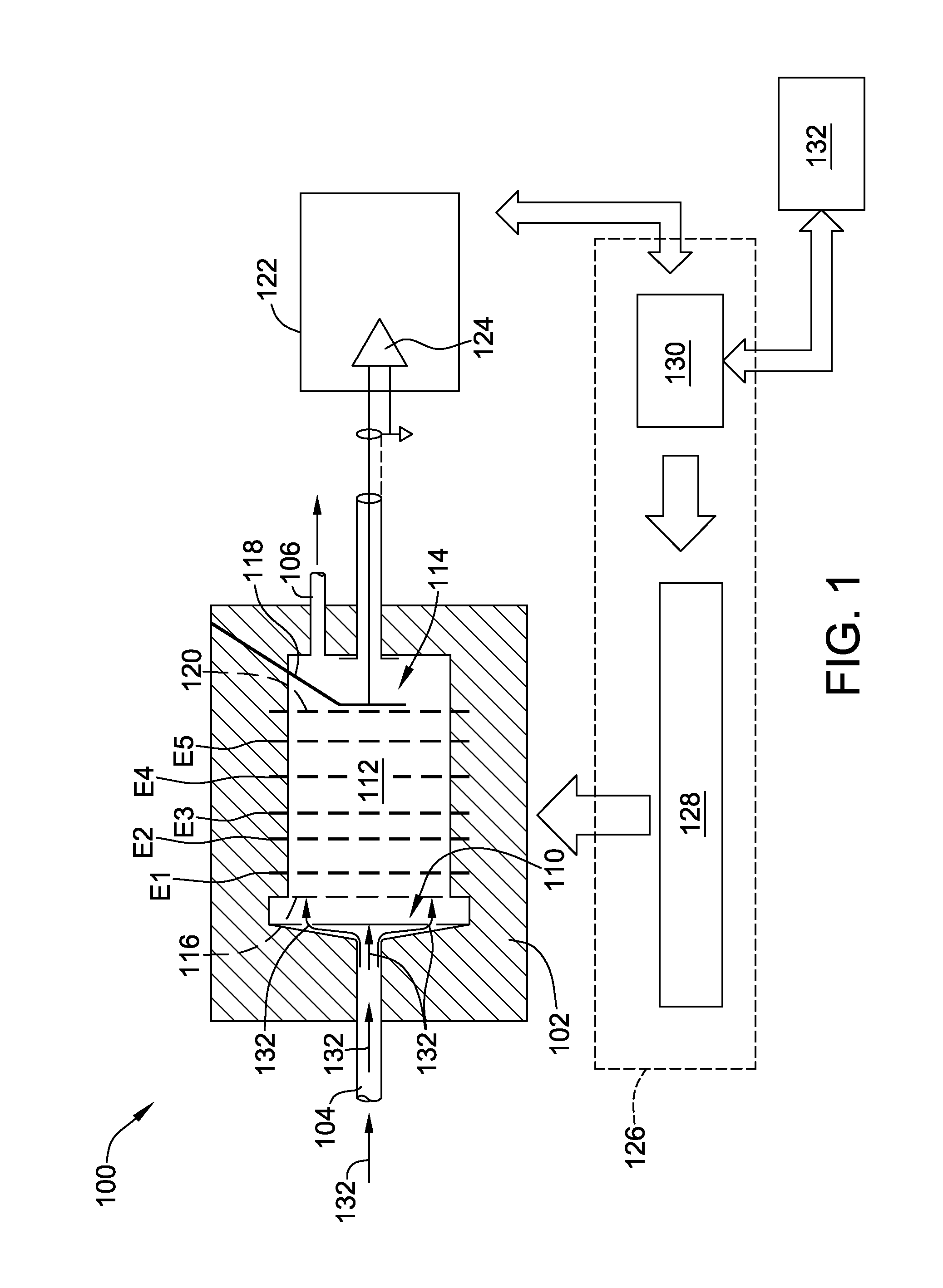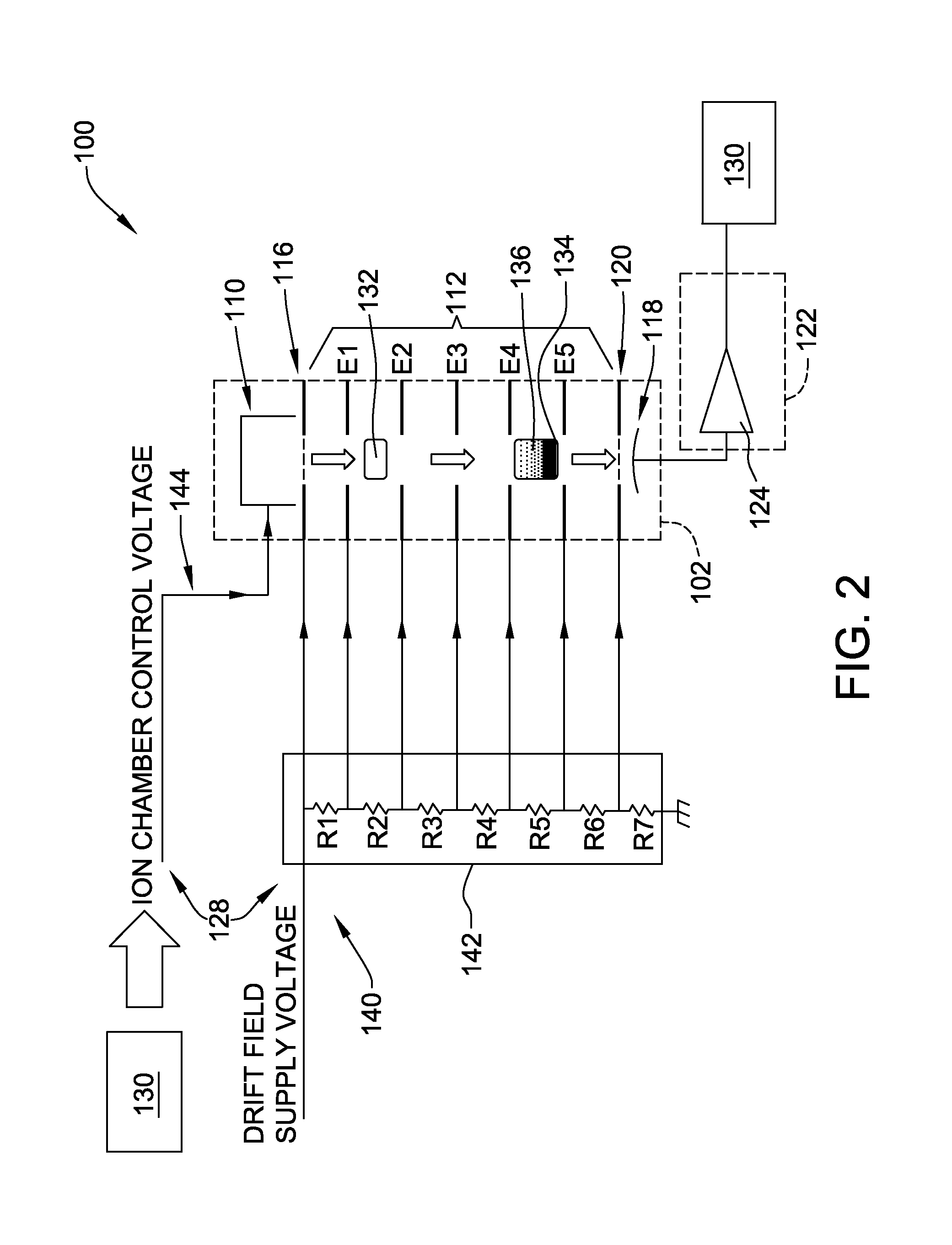Ion trap mobility spectrometer and method of using the same
a technology of mobility spectrometer and ion trap, which is applied in the direction of dispersed particle separation, instruments, separation processes, etc., can solve the problems of poor resolution, expansion and distortion of the ion disk, and negative impact on the subsequent analysis of the peak trace, so as to reduce the peak tailing portion.
- Summary
- Abstract
- Description
- Claims
- Application Information
AI Technical Summary
Benefits of technology
Problems solved by technology
Method used
Image
Examples
Embodiment Construction
[0022]The embodiments described herein provide a cost-effective system and method for improving detection of materials of interest from an object or person. The systems and methods described herein induce a first electric field across an ionization chamber for a first temporal period, i.e., a first pulse. The first pulse has a first polarity, thereby ejecting at least a portion of the ions from the ionization chamber. Also, the systems and methods described herein induce a second electric field across the ionization chamber substantially immediately following the first temporal period. The second electric field has a second polarity opposite the first polarity, i.e., a second pulse, thereby substantially decreasing the ejection of the at least a portion of the ions from the ionization chamber. Further, the systems and methods described herein reduce a tailing portion of a spectral peak associated with the ions ejected from the ionization chamber as a result of the second field pulse...
PUM
 Login to View More
Login to View More Abstract
Description
Claims
Application Information
 Login to View More
Login to View More - R&D
- Intellectual Property
- Life Sciences
- Materials
- Tech Scout
- Unparalleled Data Quality
- Higher Quality Content
- 60% Fewer Hallucinations
Browse by: Latest US Patents, China's latest patents, Technical Efficacy Thesaurus, Application Domain, Technology Topic, Popular Technical Reports.
© 2025 PatSnap. All rights reserved.Legal|Privacy policy|Modern Slavery Act Transparency Statement|Sitemap|About US| Contact US: help@patsnap.com



